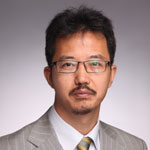A new horizon to the integration of Asian civilizations as equals
By Rabi Sankar Bosu
As this year marks the 70th anniversary of the founding of the People's Republic of China, the country is hosting multiple diplomatic events to deepen diplomatic ties with the world. After the success of the Second Belt and Road Forum for International Cooperation in late April, along with the ongoing Beijing International Horticultural Exhibition, China is now going to host the first Conference on Dialogue of Asian Civilizations starting from May 15th to focus on the necessity of exchange and mutual learning among Asian civilizations. Its theme is "Exchanges and Mutual Learning among Asian Civilizations and a Community with a Shared Future." Although the China-initiated CDAC is centered on Asia, it is open to different civilizations from around the world. Undoubtedly, if Asia, which is considered a "Light of Civilizations," marches hand-in-hand towards common progress, development and prosperity, it will lead global prosperity.
![A view of the Conference on Dialogue of Asian Civilizations themed flower garden is showed in downtown Beijing on May 3, 2019. [Photo: IC]<br/>](https://p1crires.cri.cn/01dcri/images/zhycms_chinaplus/20190513/22d905d4-bdcb-488c-aeab-ce46e73cbb13.jpg?x-oss-process=image/resize,w_650)
A view of the Conference on Dialogue of Asian Civilizations themed flower garden is showed in downtown Beijing on May 3, 2019. [Photo: IC]
Quite expectedly, all eyes are now on President Xi Jinping, who will deliver the inaugural address to the Conference on May 15th, where he is likely to present new vistas for Asian countries to enhance pragmatic cooperation with China in building "an Asian community of shared future."
China's hosting of a large-scale diplomatic event that is "rich in content and plural in forms" comes as no surprise. The Chinese government, under the auspices of President Xi Jinping, has been promoting inter-civilization exchanges for years. It is worth recalling that while delivering his speech at the headquarters of the United Nations Educational, Scientific and Cultural Organization (UNESCO) in Paris in March 2014, Xi Jinping noted that "civilizations are equal, and such equality has made exchanges and mutual learning among civilizations possible." At the Conference on Interaction and Confidence Building Measures in Asia, held in Shanghai in 2014 and the 2015 Boao Forum for Asia, Xi Jinping proposed a conference to promote dialogue among various Asian civilizations, boost regional understanding and enhance cooperation.
It's matter of pride for Asian communities that time-honored Asian civilizations are the oldest civilizations in the world, spanning a period of more than 5,000 years, witnessing the fusion of customs and traditions, which are reflected in their varied culture, languages, beliefs and heritage. Asian countries were the first to advocate the "Five Principles of Peaceful Co-existence" at the world-famous "Bandung Conference" in Indonesia in April 1955. And both China and India played an important role in the conference's success. The conference was an important step toward building the Non-Aligned Movement during the height of the Cold War.
China's diplomacy is based around peace, development and win-win global cooperation. China, as the biggest developing country and the second largest economy in the world, is inviting countries around the world to join in its efforts to build a community with a shared future for mankind. As such, Asian countries must seize the opportunity at the CDAC, as its theme is connected to the development of Asian nations.
Speaking ahead of the conference, Philippine Communications Secretary Martin Andanar told Xinhua, "The CDAC will foster understanding among Asian countries in charting a shared future," adding the time is right "for everybody to wear each other's cultures, traditions, peoples because before we can even change the entire civilization, or maybe contribute to the betterment of the human race, we, as Asians, must understand each other." On the other hand, Indian government is viewing the conference as an important platform for enhancing bilateral exchanges with China. Referring to the Wuhan meeting between Indian Prime Minister Narendra Modi and President Xi Jinping, India's Ambassador to China, Vikram Misri, in an exclusive interview with the CRI-Hindi Service, noted "India and China share age-old cultural and civilization ties. I think, the CDAC will bring the two countries together in a constructive manner to cope with existing conflicts. It will bridge the perceptional gap between the two peoples through soft power such as films, festivals, foods, yoga, media exchanges and so on, to enhance bilateral understanding."
China's State Council Information Office says the gathering of Asian countries, spreading over several days, contains the opening ceremony, six parallel forums, an Asian Culture Carnival and Asian Civilization Week. More than 2,000 people, including government officials from 47 countries in Asia, as well as from outside the region, plus well-known figures in the fields of culture, education, cinema and television, think tanks, media and tourism have been invited to attend. The participants will take part in various events, including the Asian Civilization Parade, Asian Culture Festival, Asian Culture and Tourism Exhibition, Asian Film and TV Week, Asian Cuisine Festival and a Joint Exhibition of Asian Civilizations.
CDAC is the reincarnation of China's long cherished cultural paradigm that seeks "Prosperity with the neighbor," which is evidenced in the design of the six-petal peony flower-shaped logo of the event. It demonstrates the underlying uniformity of a united Asia, despite their external differences. The petals' different colors reflect the colors of the national flags of Asian countries. Nonrepresentational figures of hand-in-hand humans are embedded in the logo to symbolize communication among the different civilizations in Asia and the Asian people. This conference is a platform to unite Asia and the world, connecting the hearts of different peoples.
Note: Rabi Sankar Bosu is the Founder & Secretary, New Horizon Radio Listeners' Club of China Radio International based in West Bengal, India.






